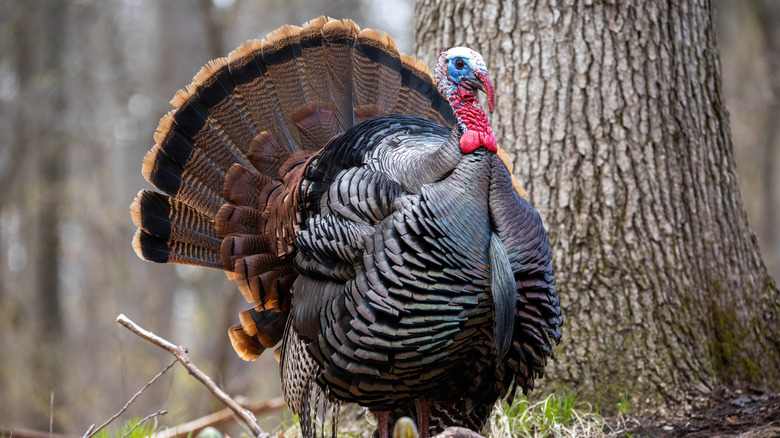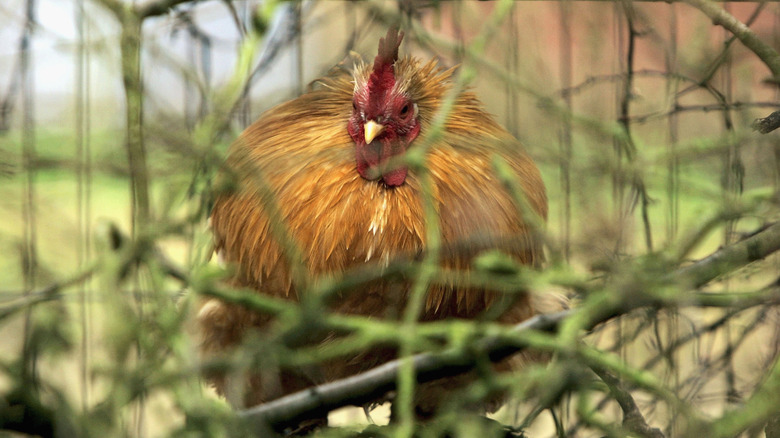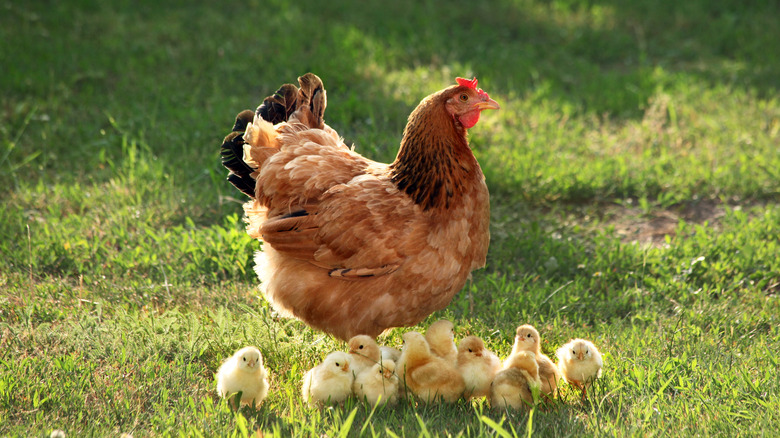Why The US Government's Chicken-Turkey Hybrid Failed
Sure, this Thanksgiving you could be boring and get a turkey for your dinner table. Or you could spice things up with a turducken. This centerpiece, which was first created in the Louisiana area in the 1970s or 1980s, according to Taste of Home, is formed by unceremoniously inserting a chicken inside a duck inside a turkey, with stuffing being used as padding between the layers of meat.
The turducken might be the most extreme example of the lengths people are willing to go to in order to create a nice hybrid poultry dinner, but in fact it's not the only time people have tried to put their heads — and two birds — together. In the 1950s, the U.S. government actually got in on the hybridization fun when they put scientists to work creating a churk: a chicken-turkey combo (via Science News). This churk, unlike the turducken, was genetically spliced together, not just mechanically assembled in the kitchen. But ultimately, unlike ligers and mules, the churk failed — for a surprisingly simple reason.
Chickens and turkeys
Most people are pretty familiar with chickens. Some 50 billion of these birds are raised each year for food, making them the most widely domesticated fowl on the planet, according to AZ Animals. Still, though you've probably seen a picture of a chicken, you might not have ever touched one in person. So what does a chicken look like? They're short, stout birds which can have feathers ranging in color from white to brown. Weighing between two and six pounds and living between two to four years, chickens are social animals that move around in flocks.
Turkeys also live in groups, according to All About Birds. With dark feathers and a red flap of skin on their throat, turkeys are native to North America and can be found across the United States. They weigh between five and 25 pounds, and are known for their characteristic gobble noise (via National Geographic).
So what inspired scientists to blend these two birds together? They were actually working toward a different goal: turkeys that would be able to reproduce without the interference of a male (via Science News). Yes, they wanted to make self-cloning turkeys. In the process, though, they ended up creating chicken eggs fathered by turkeys, and — spoiler alert — the offspring didn't exactly come out great.
Why the churk failed
Though scientists fertilized 2,900 chicken eggs by male turkeys, only three of those eggs ever hatched, according to Science News. These birds had crooked necks and strangely twisted feathers, a feature that may have resulted from unequal growth among the animals' cells, according to a 1960 article from The Pittsburgh Press.
It wasn't just appearances that were off, either. The churks were weak, quiet, and generally dumb birds that actually had to be kept separate from the 100% turkey chicks, lest they be pecked to death (via Weird Universe). They were also sterile, meaning human interference would be needed to produce any more of the species. Needless to say, the hybrid was not deemed commercially viable, and when the three male churks died seven months after their birth, that was the end of their short-lived species.
But what was the reason behind all these deformities? It comes down to chromosomes, according to Science News. Animals of the same species have the same number of chromosome pairs — 26 for humans, for instance, and 56 for silkworms (via Bank of Biology). But though chickens have six pairs of chromosomes, turkeys have nine, a discrepancy that spelled poor things for the churk.


